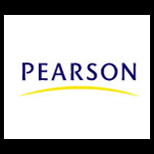
ACC 201/202 MYACCLAB E-TEXT ONLY >I<
16th Edition
ISBN: 9781323118047
Author: Pearson
Publisher: PEARSON C
expand_more
expand_more
format_list_bulleted
Concept explainers
Question
Chapter 10, Problem 10.15E
1.
To determine
Trading Investments:
Trading investments are the investments in debt or equity securities where the investor holds less than 20% of the voting stock. The investor wishes to sell these investments at a short notice like in a few days, week, or months to generate some profit out of it. They are treated as current assets.
To Journalize: The transaction of HT Publishers’ in G’s stock for the year 2016.
2.
To determine
To journalize: The sale of investment in stock.
3.
To determine
To identify: The account(s) and amount(s) which HT Publishers would report in its
Expert Solution & Answer
Want to see the full answer?
Check out a sample textbook solution
Students have asked these similar questions
Subject: Financial accounting 3.4
Can you explain the correct methodology to solve this general accounting problem?
Provide answer for this MCQ
Chapter 10 Solutions
ACC 201/202 MYACCLAB E-TEXT ONLY >I<
Ch. 10 - Prob. 1QCCh. 10 - Which of the following investments is most likely...Ch. 10 - If Intervale Railway invests 100,000 in 5% bonds...Ch. 10 - Prob. 4QCCh. 10 - Prob. 5QCCh. 10 - Prob. 6QCCh. 10 - Prob. 7QCCh. 10 - Harvard Co. purchased a trading investment on...Ch. 10 - Prob. 9QCCh. 10 - Prob. 10QC
Ch. 10 - What is a debt security?Ch. 10 - Prob. 2RQCh. 10 - Prob. 3RQCh. 10 - Briefly describe the five specific types of debt...Ch. 10 - How is the purchase of a held-to-maturity debt...Ch. 10 - Prob. 6RQCh. 10 - What method is used for investments in equity...Ch. 10 - What method is used for investments in equity...Ch. 10 - What adjustment must be made at the end of the...Ch. 10 - Where on the financial statements is an unrealized...Ch. 10 - Prob. 11RQCh. 10 - Prob. 12RQCh. 10 - Prob. 13RQCh. 10 - What does the rate of return on total assets...Ch. 10 - Identifying why companies invest and classifying...Ch. 10 - Prob. 10.2SECh. 10 - Prob. 10.3SECh. 10 - Accounting for equity method On January 1, 2016,...Ch. 10 - Accounting for trading investments On February 1,...Ch. 10 - Prob. 10.6SECh. 10 - Computing rate of return on total assets Kabra's...Ch. 10 - Prob. 10.8ECh. 10 - Prob. 10.9ECh. 10 - Accounting for bond investments Otter Creek Co....Ch. 10 - Accounting for stock investments Dollar Bill...Ch. 10 - Prob. 10.12ECh. 10 - Prob. 10.13ECh. 10 - Accounting for stock investments Suppose that on...Ch. 10 - Prob. 10.15ECh. 10 - Prob. 10.16ECh. 10 - A Accounting for bond investments Suppose Jenner...Ch. 10 - Prob. 10.18APCh. 10 - Accounting for stock investments The beginning...Ch. 10 - Accounting for bond investments Suppose Ritter...Ch. 10 - Classifying and accounting for stock investments...Ch. 10 - Accounting for stock investments The beginning...Ch. 10 - Prob. 10.23CPCh. 10 - Prob. 10.1CTEICh. 10 - Wild Adventure conducts tours of wildlife reserves...Ch. 10 - Prob. 10.1CTFSCCh. 10 - Prob. 10.1CTTPCh. 10 - In 150 words or fewer, explain the difference...
Knowledge Booster
Learn more about
Need a deep-dive on the concept behind this application? Look no further. Learn more about this topic, accounting and related others by exploring similar questions and additional content below.Similar questions
- I am trying to find the accurate solution to this general accounting problem with appropriate explanations.arrow_forwardI am trying to find the accurate solution to this financial accounting problem with the correct explanation.arrow_forwardI need help with this general accounting question using standard accounting techniques.arrow_forward
- Please provide the accurate answer to this accounting problem using appropriate methods.arrow_forwardI am looking for the correct answer to this general accounting question with appropriate explanations.arrow_forwardI am looking for the correct answer to this financial accounting question with appropriate explanations.arrow_forward
arrow_back_ios
SEE MORE QUESTIONS
arrow_forward_ios
Recommended textbooks for you
 Financial Accounting: The Impact on Decision Make...AccountingISBN:9781305654174Author:Gary A. Porter, Curtis L. NortonPublisher:Cengage Learning
Financial Accounting: The Impact on Decision Make...AccountingISBN:9781305654174Author:Gary A. Porter, Curtis L. NortonPublisher:Cengage Learning Financial AccountingAccountingISBN:9781305088436Author:Carl Warren, Jim Reeve, Jonathan DuchacPublisher:Cengage Learning
Financial AccountingAccountingISBN:9781305088436Author:Carl Warren, Jim Reeve, Jonathan DuchacPublisher:Cengage Learning Cornerstones of Financial AccountingAccountingISBN:9781337690881Author:Jay Rich, Jeff JonesPublisher:Cengage Learning
Cornerstones of Financial AccountingAccountingISBN:9781337690881Author:Jay Rich, Jeff JonesPublisher:Cengage Learning Financial & Managerial AccountingAccountingISBN:9781285866307Author:Carl Warren, James M. Reeve, Jonathan DuchacPublisher:Cengage Learning
Financial & Managerial AccountingAccountingISBN:9781285866307Author:Carl Warren, James M. Reeve, Jonathan DuchacPublisher:Cengage Learning Intermediate Accounting: Reporting And AnalysisAccountingISBN:9781337788281Author:James M. Wahlen, Jefferson P. Jones, Donald PagachPublisher:Cengage Learning
Intermediate Accounting: Reporting And AnalysisAccountingISBN:9781337788281Author:James M. Wahlen, Jefferson P. Jones, Donald PagachPublisher:Cengage Learning

Financial Accounting: The Impact on Decision Make...
Accounting
ISBN:9781305654174
Author:Gary A. Porter, Curtis L. Norton
Publisher:Cengage Learning

Financial Accounting
Accounting
ISBN:9781305088436
Author:Carl Warren, Jim Reeve, Jonathan Duchac
Publisher:Cengage Learning

Cornerstones of Financial Accounting
Accounting
ISBN:9781337690881
Author:Jay Rich, Jeff Jones
Publisher:Cengage Learning

Financial & Managerial Accounting
Accounting
ISBN:9781285866307
Author:Carl Warren, James M. Reeve, Jonathan Duchac
Publisher:Cengage Learning

Intermediate Accounting: Reporting And Analysis
Accounting
ISBN:9781337788281
Author:James M. Wahlen, Jefferson P. Jones, Donald Pagach
Publisher:Cengage Learning
